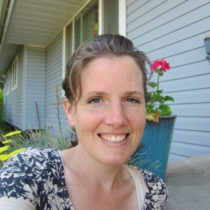Landscape Architecture for Landscape Architects › Forums › GENERAL DISCUSSION › earthquake Japan
- This topic has 1 reply, 12 voices, and was last updated 14 years, 8 months ago by
 Andrew Garulay, RLA.
Andrew Garulay, RLA.
-
AuthorPosts
-
March 15, 2011 at 2:53 pm #164170
 Thomas J. JohnsonParticipant
Thomas J. JohnsonParticipantTime / Space is an interesting relationship to study in the rebuilding of areas effected by disasters. When buildings and infrastructure are destroyed people’s immediate response is, “rebuild it”. But the physical structures that were ruined are much more than the sum of their materials. There is a history behind them. They were not built spontaneously and for that reason they cannot be rebuilt spontaneously. These areas were constructed on an as-needed basis and there is a financial relationship that justified their creation. It took hundreds of years to achieve what we see today. The Kobe port has a history dating back to the 10th century and beyond. You cannot recreate that over night… nor should we expect our governments to perform miracles. (The government does not have their own money. They only have money that they have taken from businesses and their employees.) Business people saw opportunities for growth, took risk and invested in the expansion of their businesses. When governments attempt to recreate these conditions they inevitably fail because they are forcing the process and instead of gradually building an enterprise they are instantly incurring insurmountable debt. Meanwhile the businesses that were there have either gone under or adapted and moved elsewhere. We need to reexamine our perceptions of loss and grieving related to the physical environment if we want to achieve true resolution of our grief and regeneration of our communities. In a world in which we want everything now, we have to understand that some things just take time… businesses, free-market enterprise and entrepreneurial spirit create communities, the government does not. If it is worth rebuilding, it will be rebuilt. If it is not, at the moment, energy will be concentrated elsewhere… that is the nature of things and there is no way around it…
March 15, 2011 at 3:54 pm #164169 TakkieParticipant
TakkieParticipantThanks Andrew. Your information is most practical. You can also text REDCROSS to 90999 to make a $10 donation to help those affected by the earthquake in Japan.
What you can do now is
1) to donate money (you can involve your company, or larger parties if you are capable)
2) send supportive messages to your friends, families in Japan
Government agency is not accepting private goods such as water and food due to limited traffic situation.
Please do things above first, you can think of landscape solutions later.
March 15, 2011 at 5:09 pm #164168 Heather SmithParticipant
Heather SmithParticipantOkay I just have to laugh about the seal conversation. Especially, pointing out tacky beachfront homes and then stating you rented one of them. I am also assuming this oceanfront abode was in the direct path of future tsunamis. And that YOU are one of the 1,000,000 in San Diego. Not disagreeing that humans take more than their fair share. We see that up here in Idaho where certain groups are angry that wolves are eating elk. So I understand the frustration…just had to laugh…
And thanks for the link to the Red Cross!
March 15, 2011 at 5:12 pm #164167 Cliff SeeParticipant
Cliff SeeParticipantJapan does not have the luxury of McHargs “rocket science”.. its a small, crowded island country with few energy sources. 125 million people live in a country the size of the state of Montana.They already take extreme stewardship over what little land they use and have.
The japanese are some of the most resourceful people around, esp when it comes to energy, design, small spaces and social interaction between humans and nature…. a 3000 year history… indeed there are some lessons to be learned, but McHarg is not news.
March 15, 2011 at 7:05 pm #164166 Cliff SeeParticipant
Cliff SeeParticipantyes its not a question of ignoring McHarg, they have already taking the layering into consideration many, many generations ago without McHarg’s input – but with their own collective knowledge, memory and experience with water vs land vs resources.
McHarg-ism was not going to stop at 25 foot wall of water, at 550 m/p/h.
We can only be amazed that the tragedy did not claim hundreds of thousands of more lives. In most other coastal places, with such a large population, the death count would be closer to a half million… to this degree, I admire their common sense and ingenuity.
March 15, 2011 at 7:07 pm #164165 Andrew SpieringParticipant
Andrew SpieringParticipantWe will also be donating 10% of the total ticket sales from our upcoming webinar series to Red Cross to help the relief efforts in Japan.
March 16, 2011 at 5:50 am #164164Andrew Harvey
Participantfor animals (not sure if dolphins are a priority at the moment but hey):
http://www.arkbark.net/?q=en%2Fnode%2F2901
& if you don’t mind the religious affliation, i’ve been told that this organization does a better job than red cross & others at getting a large portion of your donation to those in need:
http://secure.gbgm-umc.org/donations/umcor/donate.cfm?code=3021317
March 16, 2011 at 5:51 am #164163Andrew Harvey
Participanttks!
March 16, 2011 at 2:08 pm #164162March 16, 2011 at 3:15 pm #164161 Trace OneParticipant
Trace OneParticipantNothing in La Jolla is really tacky, Heather, that wasn’t really the point..Yes, I am one of the one million population of SD, and yes I lived on a seaside cliff..I probably should have voted with my feet and chosen not to live in a gorgeous spot..But I did my part to not increase the population of SD, by choosing not to have kids….”there is no problem not exacerbated by overpopulation”..Bill McKibben. I also don’t eat meat, in an effort to help the earth towards a cleaner future..
It seems like it is a matter of what one feels one can control, I geuss. .. I can control whether I flush the seals off their rookery, or let them be..and in controlling my own behavior, do I have the right to decide to control others, forcing them to act as I do? What if, in not controlling others behavior, we no longer have harbor seals any more for children to delight in..
Where does one draw the line..
To relate it to LA, a lot of people on this site feel it is not their job to direct clients towards more sustainable designs..
March 21, 2011 at 7:49 am #164160 Denis VasilievParticipant
Denis VasilievParticipantI understand that at the moment it is not actual, but I think that for the future we may invite some constructions in the ocean in front of Japanese cities whitch would brake tsunami before it reaches the beach. To work out this plan we need to collaborate and maybe take architects or civil engineers to our group. We need to create a team and thouse who have bright ideas may collaborate through the web. So if anyone wants to collaborate you may join my group Collaboration. I look forward to start working. If you know any teams alresady working on such projects please let me know.
March 21, 2011 at 4:19 pm #164159Andrew Harvey
ParticipantHave been meaning to reply to this post, but with work & the countless “Are you OK/radioactive?” messages…
At any rate, I by and large agree with what’s been written.
I’d just like to emphasize that there exists in Japan a very long standing tradition of “rebuild it”: the 30 year renewal of Ise Shrine, 20 year rethatching of Gasho house rooves, replastering of walls, and of course “rebuild it” after catastrophes. Rebuilding, renovating, cleaning, etc. carry significant meaning and take up a significant role in any design project here.
That said, contemporary rebuilding often seems to be approached with technological and statistical solutions to structural problems specifically/only; very few projects offer intelligent constructs attuned to complex (PESCE) contexts. Of course, this is not only true of rebuilding after a catastrophe, but the number of places built in this way seems remarkably high in Kobe.
Time will tell, but I certainly hope that Tohoku will pick up soon enough, and grow intelligently.
March 29, 2011 at 4:02 am #164158 -
AuthorPosts
- You must be logged in to reply to this topic.


